You’d have to be at least a decade or two older than Forage Market bakers Gerald Walsh and Chad Sparks to remember a world in which bagels were not as ubiquitous as gas station pizza.
Historians trace the bagel’s origins to 17th-century Eastern European Jewish communities, specifically near Krakow, Poland. Handmade with simple and sometimes secret recipes of flour, malt syrup, salt, water and yeast, these bagels eventually made their way to Manhattan’s Lower East Side with immigrant Polish Jews at the turn of the 20th century.
Over time, small-scale bagel bakeries opened in New York, and at one time the majority of them were represented by a trade union, the Bagel Bakers Local 338. This union established the standards for bagel production — primarily that bagels be prepared by hand, boiled in hot water for one minute and baked.
The invention of the Thompson Bagel Machine by Daniel Thompson in the late 1950s helped the bagel break out of Manhattan and simultaneously broke the bagel bakers’ union. Thompson’s machine eliminated the hand-rolling step of bagel making and he leased his first one to Murray Lender of New Haven, Connecticut, in 1963.
Lender used the machine to mass-produce a line of bagels that were packaged in bags of six and frozen for easy storage, then shipped to grocery stores across the United States. Within a decade, the once-enclaved ethnic New York specialty was everywhere.
The spread and commercialization of this simple bread roll with a hole over the last 40 years has morphed it into something completely different (and sometimes unrecognizable).
Added to the standard ingredients of flour, salt, water, malt and yeast were things that would make New York bagel purists shudder. Blueberries, cinnamon, nuts, even (gasp) Oreo cookies. Some makers began steaming their bagels instead of boiling them, and loaded them with blends of cream cheese and . . . cranberries?
Add to that there are now bagel chips and mini bagel bits, bagels masquerading as hors d’oeuvres and even gas station pizza bagels.
Fortunately for bagel purists in Lewiston-Auburn, there’s none of that poppycock going on at Forage Market downtown at 180 Lisbon St., Lewiston. It could very well be because Forage owner Allen Smith’s first bagel memory is not one of a toasted Lender’s frozen bagel.
“I have a very vague memory of being taken to a real old-world-style Jewish bagel bakery in Cincinnati where I grew up,” says Smith. “This only happened once or twice and I was quite young so it’s shrouded by the mist of time, but I remember the warm smells and a bag of bagels being passed over a counter that was higher than my head. I remember they were very good, too.”
With a passion for artisanal breads made in old-fashioned ways, the owner and bakers at Forage Market have even gained national attention for their bagels. Last month, Saveur magazine recognized Forage’s bagels as being among the best in the country.
WHILE THE CITY IS DARK . . .
It’s 4 a.m. Most of the city is still asleep. Baker Chad Sparks slips into Forage Market and heads downstairs. He opens up the door of the wood-fired oven and stirs through the ashes of yesterday’s fire looking for any remaining embers of yesterday’s baking hours. He heads down the hall and brings back an armload of split wood, which he will chop into smaller, easily ignitable sticks. He queues up some jazz on an I-pad, starts the fire and then heads back upstairs to get the day’s batch of bagel dough, made earlier and allowed to ferment in the coolers. In approximately two hours, the oven will reach the optimal temperature for baking.
The oven itself, custom built for making bagels, was designed by local mason Adam Coe in a style similar to those in Montreal, where wood-fired bagels are a tradition. It has a sliding iron door over a very wide opening, which is good for bagels.
When head baker Gerald Walsh arrives, he starts heating water in a large vat on a burner next to the oven. He puts out bowls of poppy seeds, sesame seeds, coarse salt and the “everything” mix, and lines up the bagel boards. These are just a few of the early morning routines.
By 7 a.m. the cozy basement is a small bagel factory, with Walsh and Sparks performing the various stages of production in tandem and in parallel. They’ll make dough, roll bagels, boil bagels and bake bagels. In between, they’ll run up and down the stairs with bagel dough-laden boards for the refrigerator and basket after basket of fresh, hot bagels for the Forage faithful.
It all begins with the dough. A long-time home baker well before opening Forage, owner Smith was enthusiastic about wild yeast-leavened breads. He decided this would be part of Forage’s bread signature. So each day, Forage’s own starter is fed with high-grade King Arthur artisan flour in an industrial mixer. While this is mixing, Sparks carefully divides dough made earlier and refrigerated. He’ll weigh each piece of dough for uniformity; approximately 130 grams per bagel.
Each identical dough ball is then rolled by hand. “You don’t want to stress the dough,” says Sparks, as he rolls a piece into a thick rope, joins the two ends into a circle, wraps the circle around his wrist and rolls the joint against his wrist to seal it. Not too much, though. The dough must stay cool and tight.
The finished raw bagel is then placed on a long board that holds 24. They will be refrigerated for two days — refrigeration slowing down the fermentation process so that the final flavor is mild and distinctive.
Meanwhile, Walsh is creating the current day’s baked bagels. Raw bagels rolled out two days ago are now fermented to perfection. They are put into the vat of boiling water, 24 at a time, for no longer than 20 to 30 seconds. Walsh then scoops them out of the boiling water with a large skimmer and places them on his work table. Two long bagel boards are in front of him covered with bakery burlap. One board holds 12 bagels.
Walsh dips each bagel individually into sesame seeds, poppy seeds or “everything mix.” The coarse salt is carefully sprinkled on by hand.
Once the boards are loaded with bagels, Walsh places them in the oven and keeps a watchful eye. After about three minutes, he’ll flip them onto the floor of the oven using a tool resembling a large wooden spatula, and remove the boards.
The bagels will finish baking on the oven’s floor from the heat of the bricks and wood flames, which caramelize the crust and create the trademark crunch. Walsh is diligent about the fire, intermittently opening the door to rake the coals that line the left side of the oven and toss in more wood.
“You want good hot flames to caramelize the crust,” he says, noting he has to “watch closely to catch them in time, because you can easily burn them.” Red spots on a bagel are caramelization, considered good flavor, “but they can get black very quickly,” he says, as he takes a final glance at the flames before shutting the oven door.
After a total of 10 minutes more or less, the bagels come out of the oven and will sit for a minute or two as the bread starches gelatinize. “If they’re too hot to hold, they’re too hot to cut,” Walsh says.
He recommends eating them warm. If, perchance, your bagel cools on the trip home, toasting will refresh the crunch. Walsh recommends eating your bagel the same day for maximum enjoyment.
While many purists prefer their bagel either plain or with butter or cream cheese, they’re also great foundations for breakfast sandwiches.
“I eat a bagel every day,” says Walsh. “If I don’t have a bagel, I feel a little bit off. I usually get a breakfast sandwich. I’m fanatical about the breakfast sandwich we offer. It’s a local egg, local greens, it’s all this really good stuff. It feels like good food.”
A BAKER’S PASSION
Walsh has been at Forage for three-and-a-half years now. Prior to relocating to Lewiston, he was a professional baker at GreenStar Cooperative market in Ithaca, New York, making a full range of bakery items.
Gerald viewed himself as an experienced baker when he landed at Forage, though he hadn’t specialized in bagels. “I had made bread before . . . and I recognized immediately the quality of the product they (Forage) were putting out. I immersed myself in it. Once I got a grip of what I was doing with it . . . there was something distinctly different with the intensity of the flavor, the ratio of crust to crumb, where the variables aligned and gave me an aesthetic experience eating it.”
In order to better understand the fermentation process and what it meant, he said he went deeply into the literature about sourdough baking. “I attended the Kneading Conference in Skowhegan, connected with bakers and oven builders, and started to feel the community aspect of it. Family and customers affirmed that the product was good, especially as I learned how to guide the loaf and extract certain flavors from it.”
Meanwhile, Walsh said, “all of that knowledge and experience was getting pushed into the bagels.”
He’s passionate about the whole process of bread and bagel making, what he calls “the family tree of possibilities.”
“What I’ve learned,” Walsh says, “is that there may be recipes and formulas out there and there might be traditions and history that are tried and true, but the process itself is not limited. There are constraints you want to learn to work within, but there are ways that you can bend them too.”
Walsh’s passion for baking world-class bagels and bread has carried over into his graduate work at Vermont College of Fine Arts, where he’s currently re-creating a 19th-century painting entirely with . . . bread crumbs.
Art and passion aside, everyone at Forage is excited about the interest in their bagels, whether local or national. Smith says the primary focus right now is to just “figure out how to accommodate (producing) all the extra bagels people are buying while trying to maintain excellent customer service and not burn out our employees.”
Gerald Walsh’s final words? “Just come and try them.”
But don’t delay, because Forage’s bagels are hot, literally and figuratively. The market generally sells out of bagels every day. On one recent Sunday, it sold more than 600 bagels.
Julie-Ann Baumer lives, cooks and writes from her home in Lisbon Falls. Read her blog www.julieannbaumer.com or follow her on twitter @aunttomato.
Send questions/comments to the editors.

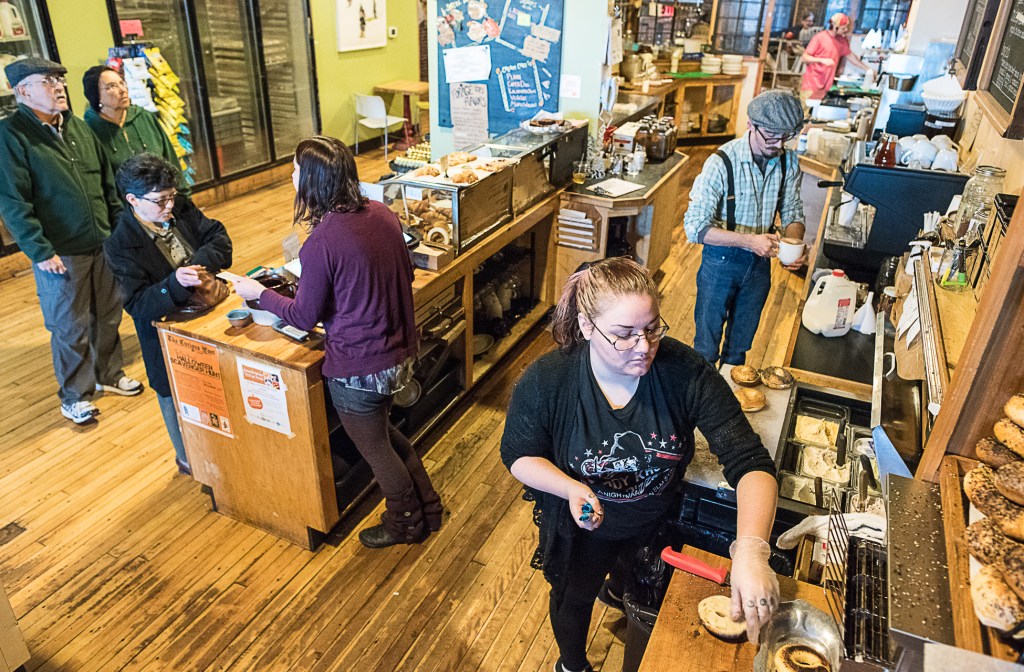
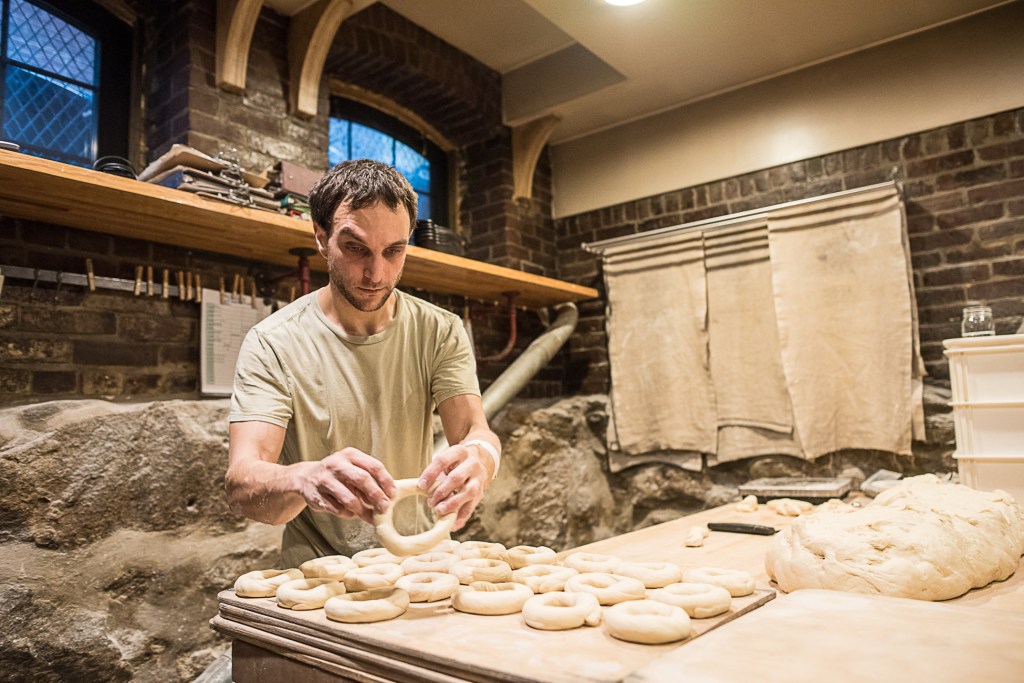
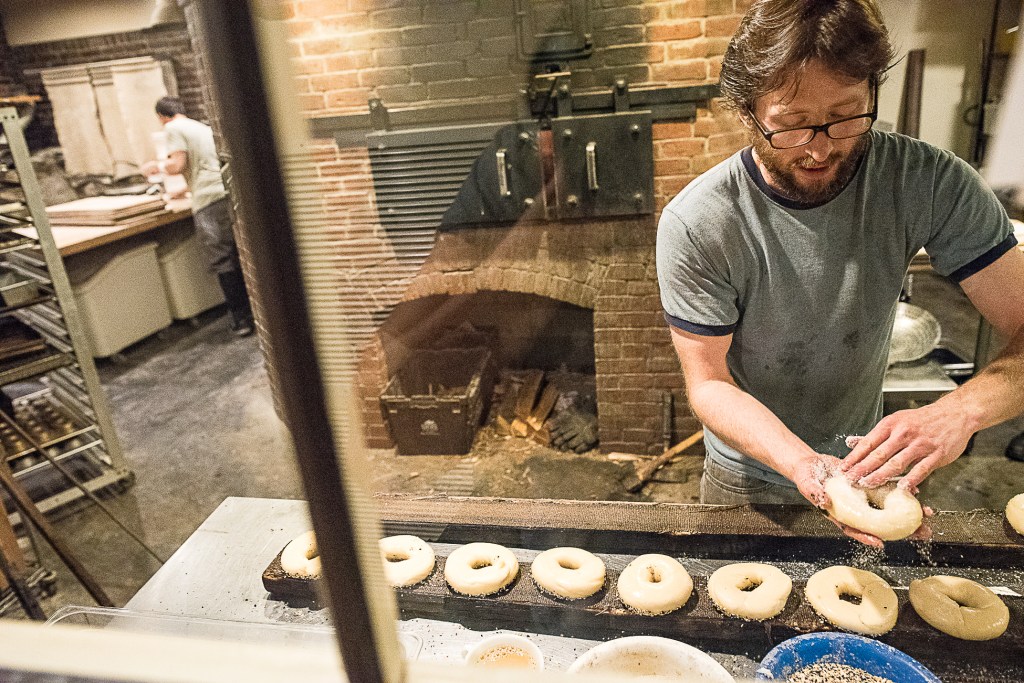
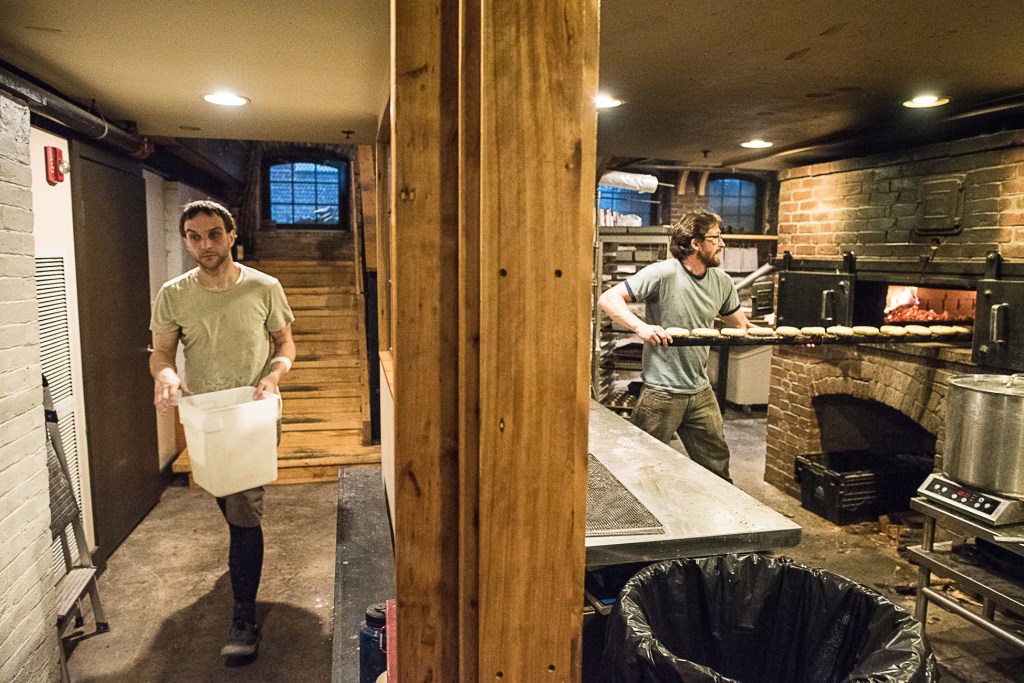
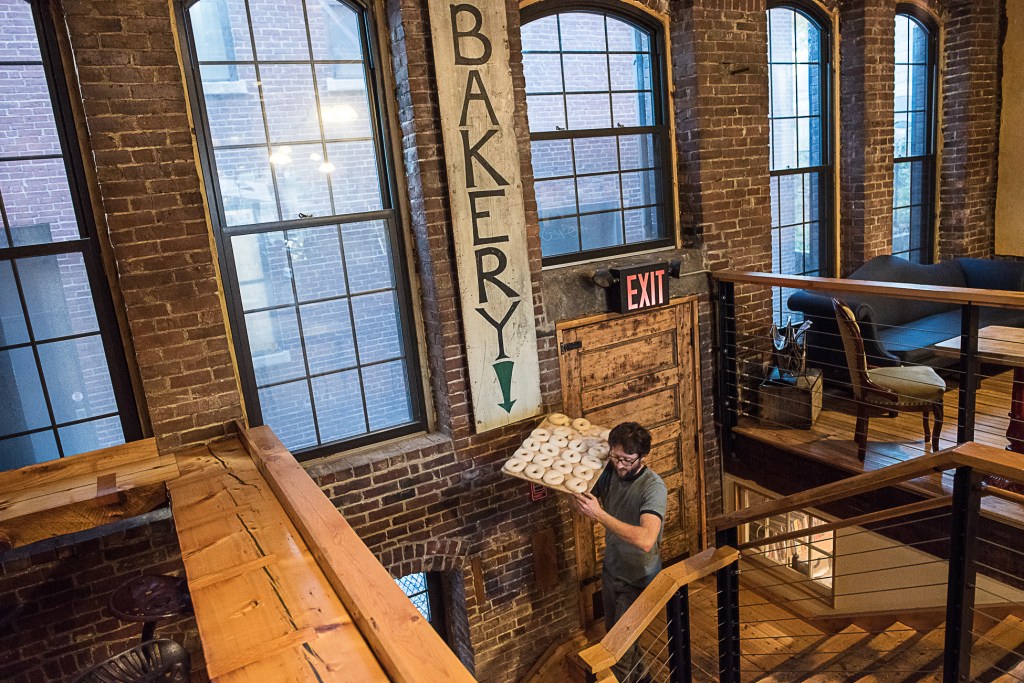
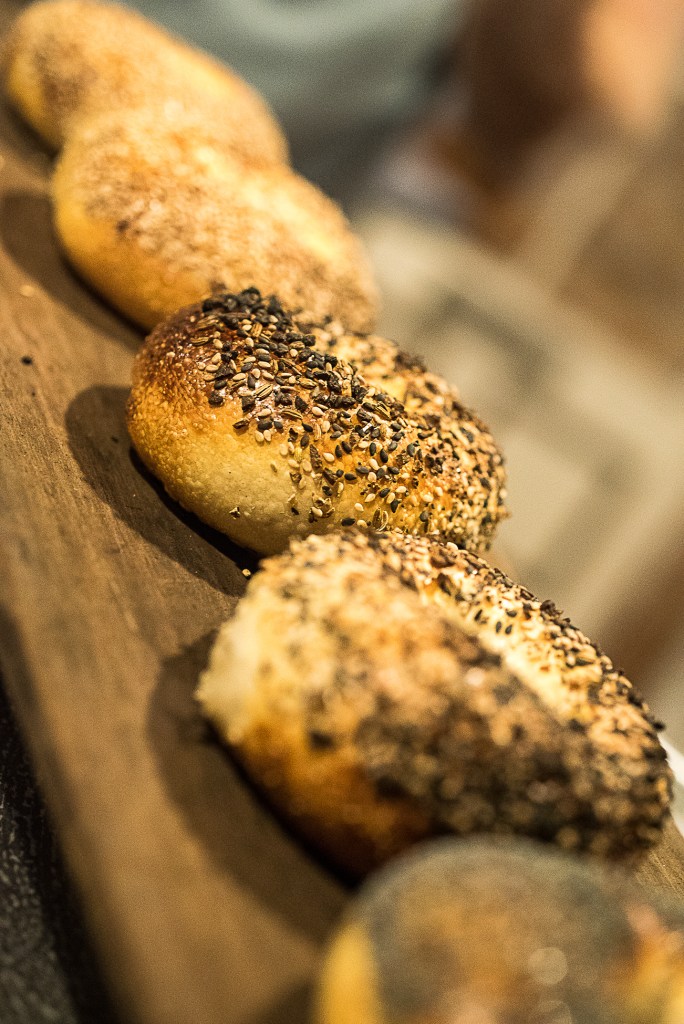

Success. Please wait for the page to reload. If the page does not reload within 5 seconds, please refresh the page.
Enter your email and password to access comments.
Hi, to comment on stories you must . This profile is in addition to your subscription and website login.
Already have a commenting profile? .
Invalid username/password.
Please check your email to confirm and complete your registration.
Only subscribers are eligible to post comments. Please subscribe or login first for digital access. Here’s why.
Use the form below to reset your password. When you've submitted your account email, we will send an email with a reset code.